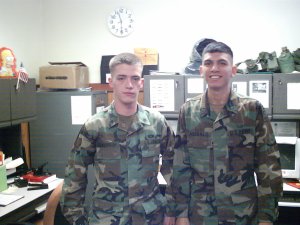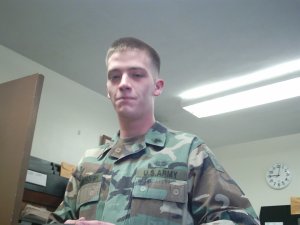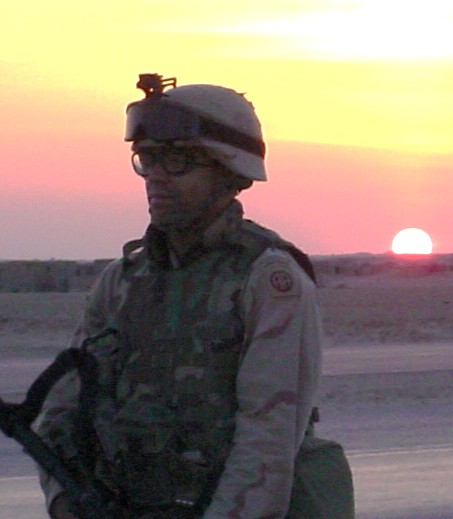This is a cross-post from http://www.military.com/opinion/0,15202,249768,00.html.
Last year was the ten year anniversary of the September 11th attacks that killed thousands of us and left a permanent scar on our collective national psyche. It was a wake-up call, and one that unified America in ways that were seemingly impossible. At that point nearly every American felt connected to the struggle and to the cause of freedom.
So what can we do on the 11th Anniversary of 9-11 to recapture that sense of unity?
Although Al Qaeda has been severely degraded, and yes, Osama Bin Laden is dead, this Nation is still combating the extremist elements that plotted and executed this attack, and our men and women are still dying in the hills of Afghanistan. In addition, although only 1 percent of Americans have borne this burden, the long tail costs of their care will be borne by all American tax-payers for decades to come.
But does the average American still feel the sense of connectedness to a national cause? Are the war wounds of our men and women in combat and their families – both visible and hidden – felt in any way by the rest of America?
According to a 2011 Pew Research study, the answer to that question is no.
“The nation’s post-9/11 wars have been fought by an all-volunteer active-duty military made up at any given time of just one half of one percent of the U.S. population. More than eight-in-ten (84 percent) of these modern-era veterans say the American public has little or no understanding of the problems that those in the military face. Most of the public (71 percent) agrees.”
Although I sometimes agree with Mark Twain who frequently quoted that there were three kinds of lies — “lies, dammed lies, and statistics” — in this case, I think the numbers are right, but that’s not the whole story.
You can’t measure collective patriotism with a study, and you cannot measure the tensile strength of the thread of compassion that runs through the fabric of America with quantitative research.
Americans are better than that, and I think we know it. Many of us are just looking for the right way to make the connection and to show a fundamental truth about being an American – we take care of our own.
So here the good news: there are many ways that Americans can both reflect and also reach back out to the community that responded in defense to the atrocity of the 9/11 attacks, and to honor the victims and heroic actions of everyday Americans. One way that every American can reach back and re-connect is by taking time to volunteer during the September 11th National Day of Service and Remembrance.
When President Obama declared 9-11 National Day of Service and Remembrance in 2009, he created a way for all Americans to pay homage to those who lost their lives on September 11th, to thank those who fought and bled to vindicate America’s way of life on foreign soil, and gave every American a way to personify our resoluteness to unity in times of tragedy. It’s honor through service — service to our communities and to our fellow Americans in need.
The National Day of Service is the culmination of an effort originally launched in 2002 by 9/11 family members and support groups, who worked to establish the service day as a forward-looking way to honor 9/11 victims, survivors, and others who rose up in service in response to the attacks.
Congress charged the Corporation for National and Community Service with supporting this effort across the country and the Corporation on National and Community Service is working with numerous organizations to implement one of the largest days of charitable service in U.S. history.
If last year is a bench mark of the high tide of public interest in serving on the ten-year Anniversary of 9-11, this year, hundreds of organizations and thousands of individuals empowered by CNCS’ two signature programs, AmeriCorps and Senior Corps will give tens of thousands of hours of their time in service to and remembrance of the victims of 9-11, the first responders, members of the military, veterans, and their families in honor of the day.
One of the grantees from CNCS’ National Day of Service Award project, The Mission Continues is with MyGoodDeed is taking this opportunity to a new level – serving by and with military veterans who have come home from serving their country in uniform and then serve again on the home front . These military Veterans come home and then dedicate hundreds of hours to serve their communities and in the process they motivate hundreds of thousands of every-day citizens to join with them.
There are hundreds of Mission Continues fellows doing this work, and they join the national service fight with another 27,000 AmeriCorps and Senior Corps members who are also Veterans and who dedicate a year or more of their lives to serving in their communities.
According to CNCS’ service day partner MyGoodDeed, last year more than 33 million individuals around the country engaged in acts of “charitable service” and good deeds in honor of this day. This year, there are opportunities to serve on 9-11 in nearly every corner of our great nation.
When we look back at the unity of effort that once was, and see the possible, we can embrace today a vision of unity of effort and patriotism that does not need to diminish.
If even for just one day.
The opportunity to serve with and remember the sacrifices of our patriots is here, it is now, and every American is called to serve, and you simply cannot measure that. What we can measure is the dedication of the 99 percent who never wore a uniform to serve with their fellow man and woman on 9-11 and by doing so, honor the 1 percent who did.
Good deeds can unite us.
Learn more at http://www.serve.gov/sept11.asp.


